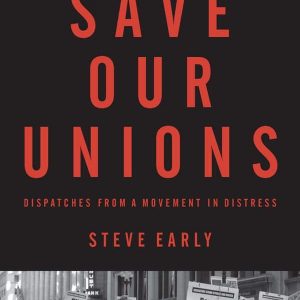Saving Labor From Itself
3.18.14
by Jon Flanders
For union officials, too often “saving the union” means maintaining union dues from a workforce suffering under bad contracts.
It has been Steve Early’s fate to chronicle in excruciating detail the decline of the labor empires that grew up in the flush years that followed the World War II — a task he takes up in his new book Save Our Unions: Dispatches From a Movement in Distress.
With the US triumphant on the world stage and industrial rivals defeated in the wake of the war’s destruction, US labor took the CIO-generated industrial union wave to a high point of 35 percent of the workforce with union representation. While the radical edge of the 1930s labor insurgency was driven out during the McCarthy period, the ranks of union officials grew and prospered; corporations, flush with cash, bided their time, while union bureaucracies grew ever-larger.
As Mike Davis points out in Prisoners of the American Dream, labor’s legal gains during the Depression fostered “a much expanded role of union staff experts, personnel managers, and outside arbiters.” In the early 1960s, near the height of the postwar boom, the numbers of union staffers mushroomed: “To operate this system and to maintain a far more decentralized galaxy of contracts … has entailed the growth of union officialdom larger than any other capitalist society … (one [union official] for every 300 workers) as contrasted … to Britain (one for 2000) or in Sweden … (one for every 1,700).”
As a longtime union staffer himself, Early had an insider’s view of the workings of this apparatus and the results of its operation as the world capitalist economy recovered from the war. The book begins with accounts of those who organized against the receding tide of unionization that began in the 1970s and continues today, with only a little over 10 percent of the American workforce represented by unions. Idealistic radicals born in the civil rights and anti-war movement like me went into unions, either as staff or on the shop floor, with the idea that a revival similar to the CIO-led organizing boom that began in the 1930s was just around the corner…

Comments are closed.